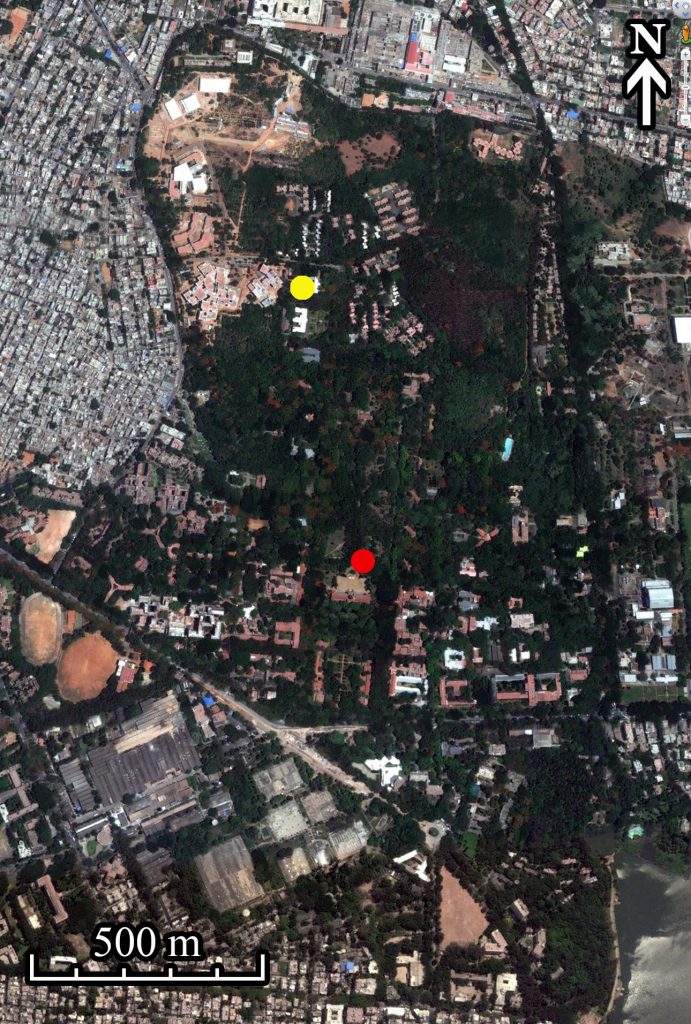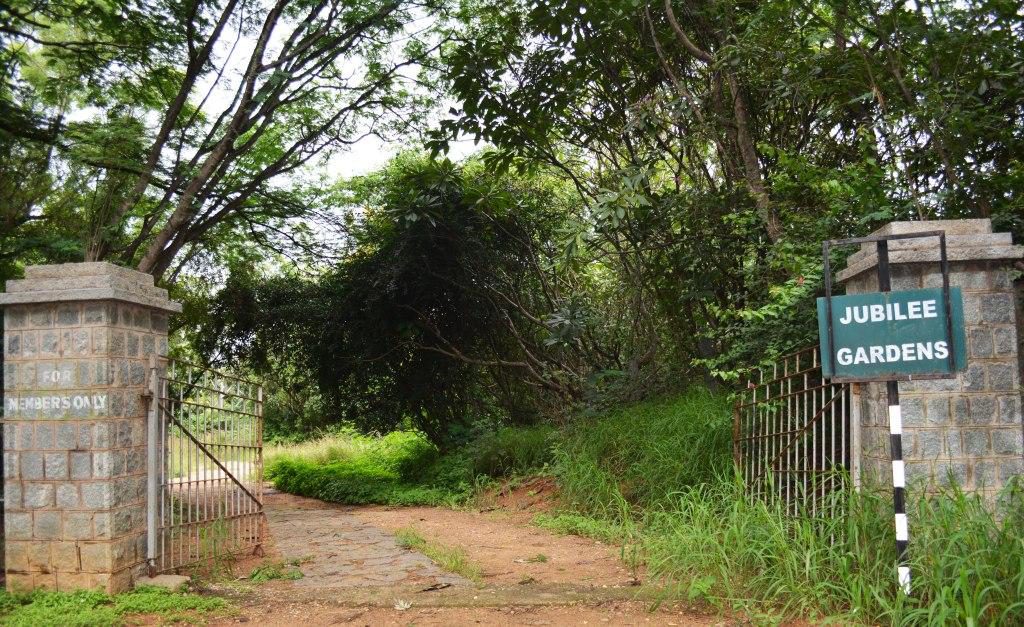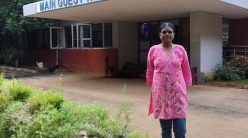The evolutionary biologist recounts his love for the campus of IISc which has also served as a laboratory for his research

(Photo: Thresiamma Varghese)
The year was 1963, and it was my first week in Bangalore. As a 10-year-old boy, I was travelling with my parents and my two siblings, in the Bangalore Transport Service (BTS) bus no. 11, from my grandmother’s house in Jayanagar to our new home in Yeshwantpur. The bus conductor was a flamboyant young man who clearly took great pride in his work, moving up and down the aisle loudly announcing the name of each bus stop with great flair in chaste Kannada. At the last-but-one stop he roared, “Tata ravara Vignana Mandira” (Tata’s Temple of Science). I was intrigued. I was already hooked on science and the name ‘TATA’ was inscribed on the bus I was travelling, having been made by the Tata business house. But what was the connection between the business house and science? There was no Google at that time, but I soon found out that IISc was founded by the Tatas in 1909 on 1.5 square km of land donated by the Maharaja of Mysore Krishnaraja Wodeyar. IISc is still locally known as the ‘Tata Institute’ in homage to JN Tata, who could not build the institute in his lifetime but left money for it in his will [see In Pursuit of Excellence: A History of the Indian Institute of Science by BV Subbarayappa]. And what luck? India’s premier institute of science was located just 1 km from my house in Yeshwantpur! I soon found out that I could just walk in and observe this ‘big school’ meant for adults interested in science. The name of the Nobel Laureate Sir CV Raman was closely associated with the Institute. I also found out that the adults in this school had time to play tennis and that they were rich enough to discard tennis balls which were good enough to play cricket with for several months! And they sold them at 25 paise a piece, and we could go across the road and play cricket in the part of the campus which is now the gymkhana. That was my first encounter with the Institute.
At the last-but-one stop he roared, “Tata ravara Vignana Mandira” (Tata’s Temple of Science). I was intrigued
My second encounter with the Institute was in the year 1968 when, aged 15, I was a PUC student in St Joseph’s College, Bangalore, and trying my hand at research, studying the oestrous cycles of laboratory rats, which I kept at home. I went to the Institute’s main library – called the JRD Tata Memorial Library – and was not let in. When I insisted that I needed to consult the Journal of Endocrinology, I was taken by the confused security staff to the head librarian, one Mr TKS Iyengar. He kindly let me in, albeit with a very skeptical smile. His skepticism I must say was justified because I did not understand a word of what I read in the Journal of Endocrinology! Nevertheless, it paid off in the end. My research was in preparation for the National Science Talent Search Scholarship Exam. Thus, my third encounter with the Institute was later that year when I was invited to the Department of Biochemistry of the Institute to be interviewed by a galaxy of experts headed by Prof PS Sarma, and I won the scholarship.
My fourth encounter with the Institute was in the year 1971 when, aged 18, I was a final year undergraduate student at Central College. I was smitten by two subjects, Animal Behaviour and Molecular Biology, neither of which were taught with any degree of passion or competence in my college. But for all its faults, Central College had an excellent library and enlightened librarians. My love for animal behaviour was born from reading King Solomon’s Ring by the Nobel Laureate Konrad Lorenz and fuelled by the discovery of many colonies of the Indian paper wasp Ropalidia marginata on the windows of the Zoology and Botany departments. And my love for molecular biology was born from reading The Double Helix by another Nobel Laureate, James D Watson, and fuelled by the discovery of an exquisite organism, the lysogenic bacteriophage lambda, which unfortunately lived only in the pages of journals in the library. But I soon found its local avatar. One day, I jumped up from my chair in the library when I read in the pages of Nature that one CV Sunder Raj of the Microbiology and Pharmacology Laboratory of the Institute, had discovered our very own, Indian lysogenic bacteriophage. I promptly came to see him, and he showed me beautiful Petri plates in which the mycobacteriophage I3 had made transparent holes on a lawn of the bacterium Mycobacterium smegmatis. The ‘I’ in I3 was meant to denote Isolate 3, but I had no qualms about thinking of the ‘I’ as denoting India.

My fifth and final encounter with the Institute happened in the year 1974 when, aged 21, I was lucky enough to be admitted to the single vacancy in the interdisciplinary field of molecular biology and joined the by-now re-christened Microbiology and Cell Biology Laboratory for my PhD. I spent the next 5 years studying the alter ego of bacteriophage lambda, our own bacteriophage I3. Imagine my delight when I saw that the Institute campus was also home to innumerable colonies of my other love, the Indian paper wasp R. marginata. I managed to make bacteriophage I3 the subject of my professional study and the paper wasp R. marginata the subject of my hobby during those five heady years. At the end of my PhD, entitled Physiological and Biochemical Studies on Mycobacteriophage I3, I was in a serious dilemma, being equally in love with both I3 and R. marginata. The difficulty, or should I say impossibility, of doing cutting-edge research in molecular biology under Indian conditions was brought home painfully to me every day of my PhD. If I were to continue with molecular biology, it would have to be in the USA or some such developed country and then of course I could focus directly on the original bacteriophage lambda itself. It was very tempting – not so much the USA, but lambda. But if I could switch animal behaviour into my profession and molecular biology into a hobby, then of course I could stay in India and spend the rest of my life studying the Indian paper wasp R. marginata. I chose the latter option; I refused to go abroad even for a postdoc, stayed back in the Institute, with soft money for many years, and in the eyes of my ‘mol-bio’ mentors, moved backwards from molecular biology to animal behaviour! And I have never regretted it.
I have never forgotten that the reason for my shifting to animal behaviour while staying in India was to be able to do cutting-edge research. Very soon, it became all too easy, and fashionable, to practice even the science of animal behaviour with sophisticated laboratories, expensive technologies, large grants, and indeed with an infusion of molecular biology techniques. Nevertheless, I have carefully designed my research so as to need as little money and technology as possible. This has been made possible because the Institute campus is a laboratory par excellence. All my research in the last 40 years and more has utilised naturally occurring ants, bees and wasps on the campus of this remarkable Institute. The Indian paper wasp R. marginata has received the lion’s share of our attention. Indeed, my goal has been to understand everything humanly possible about this fascinating species of social wasp, as I describe in my book, The Social Biology of Ropalidia marginata (Harvard University Press, 2001). Having discovered it by accident and admired it as a layman in Central College, having encountered an abundant supply of its colonies in the Institute and having decided after my PhD to focus the rest of my research career on the species, I was delighted to find that authorities in the field had opined that the genus Ropalidia holds the key to our understanding of the evolutionary forces that mould social behaviour. Twenty of my 22 PhD students have worked entirely on R. marginata. We study the wasps where they occur naturally, on the buildings and vegetation of the campus or bring them to the laboratory for more difficult experiments. Our laboratory, which we call the Vespiary, is a simple large room enclosed in wire mesh on all sides, permitting the wasps to fly in and out as they please. All studies on naturally occurring colonies have been carried out on the campus and most of our wasps brought into the laboratory have also come from the campus. Only because we were concerned about depleting the population of wasps on the campus, have we sometimes collected wasps for laboratory work from outside the campus.

Occasionally, we have turned our attention to the related species Ropalidia cyathiformis. For reasons that we do not understand yet, this second species does not fare well in the lab, and therefore all our work has been on natural colonies on campus. Two of my PhD students chose not to work on the wasps.
One of them studied the Asian dwarf honeybee Apis florea, also on the campus, and the other studied the queenless ant, Diacamma, and yes, also on the campus. We have conducted a long-term study of the population dynamics of the ant Diacamma ceylonense entirely in the Jubilee Gardens of the campus. During this study, we also found a remarkable karyotypic instability in this ant species. One of my more recent students decided not to investigate the wasps at their nests. Instead, he chose to research the homing and navigational abilities of the wasps when outside their nests. All his sophisticated field studies were done entirely on the campus. We undertook a two-year study developing and standardising sampling methods for estimating the diversity and abundance of forest insects in the Western Ghats. All the pilot experiments in preparation for this study were of course most conveniently done on the campus. My students and I have undertaken a detailed survey of ants of the campus, finding 112 species so far.
I have carefully designed my research so as to need as little money and technology as possible. This has been made possible because the Institute campus is a laboratory par excellence
Just as my favourite research subjects R. marginata and R. cyathiformis reside on the campus, so do their most important predatory wasps, Vespa tropica and Vespa affinis. These are remarkably large and complex wasp societies building multistoried paper nests. I had a memorable and dangerous experience collecting one of their large nests built on a tree and hanging precariously in front of the nursery. Incidentally, the wire mesh of the Vespiary is designed to keep the predatory wasps out while letting Ropalidia through. More recently, I had the great pleasure of teaching organismal biology to the first semester undergraduate students of the Institute for six years. All the practicals for the students utilised the biodiversity on the campus. One of their main projects and perhaps the most interesting one was the ‘ant walk’ during which they learned how to sample ants and compute and explain their levels of diversity and abundance.
I have had the privilege of living on the campus for most of my life, first in the student hostel blocks D-09 and N-17, then in the Kaveri married students’ apartment, followed by staff faculty quarters D-240, E-35 and DQ-18. I have not been away from the campus for more than three months at a time since I joined the Institute in 1974, or indeed from Bangalore since I moved here in 1963. I cannot imagine a better place to raise a family – my son Vikram grew up with the biodiversity of the campus as part of his family, becoming an avid birdwatcher and publishing scientific papers on the birds of the campus even before he graduated from high school, which was also on the campus. He now studies how the brains of birds help them to learn their species-specific songs.

It surprises me that, barring a few of my colleagues from the Centre for Ecological Sciences who conduct small parts of their research on the campus, many more of us do not take advantage of the animal and plant life on campus for our research and teaching. It bothers me that most people do not even appreciate the uniqueness of our campus – their ignorance is so great that they think that our campus needs re-branding. They fail to appreciate that a rich biodiversity is the brand of our campus, that has been bequeathed to us over millions of years of evolution and by the foresight of JN Tata and the Wodeyars and sustained by the wisdom of our directors such as CV Raman, Satish Dhawan and CNR Rao. If we cannot pursue modern biology on a campus that is home to over 112 species of ants, 25 species of bees, 50 species of wasps, 140 species of butterflies, 110 species of birds, 17 species of snakes, 20 species of dragonflies and damselflies, 60 species of spiders, and 112 species of trees, something must be wrong with us, and/or with modern biology.
I wonder if anyone else has been so blessed as to have their personal and professional lives so intimately linked to the magnificent campus of this hallowed institution. Fifty years of worship at ‘Tata’s Temple of Science’ – I cannot imagine a better life.
Raghavendra Gadagkar is a DST Year of Science Chair Professor at the Centre for Ecological Sciences and also an alumnus of IISc (ragh@iisc.ac.in). You can find more information about his research here and here.




